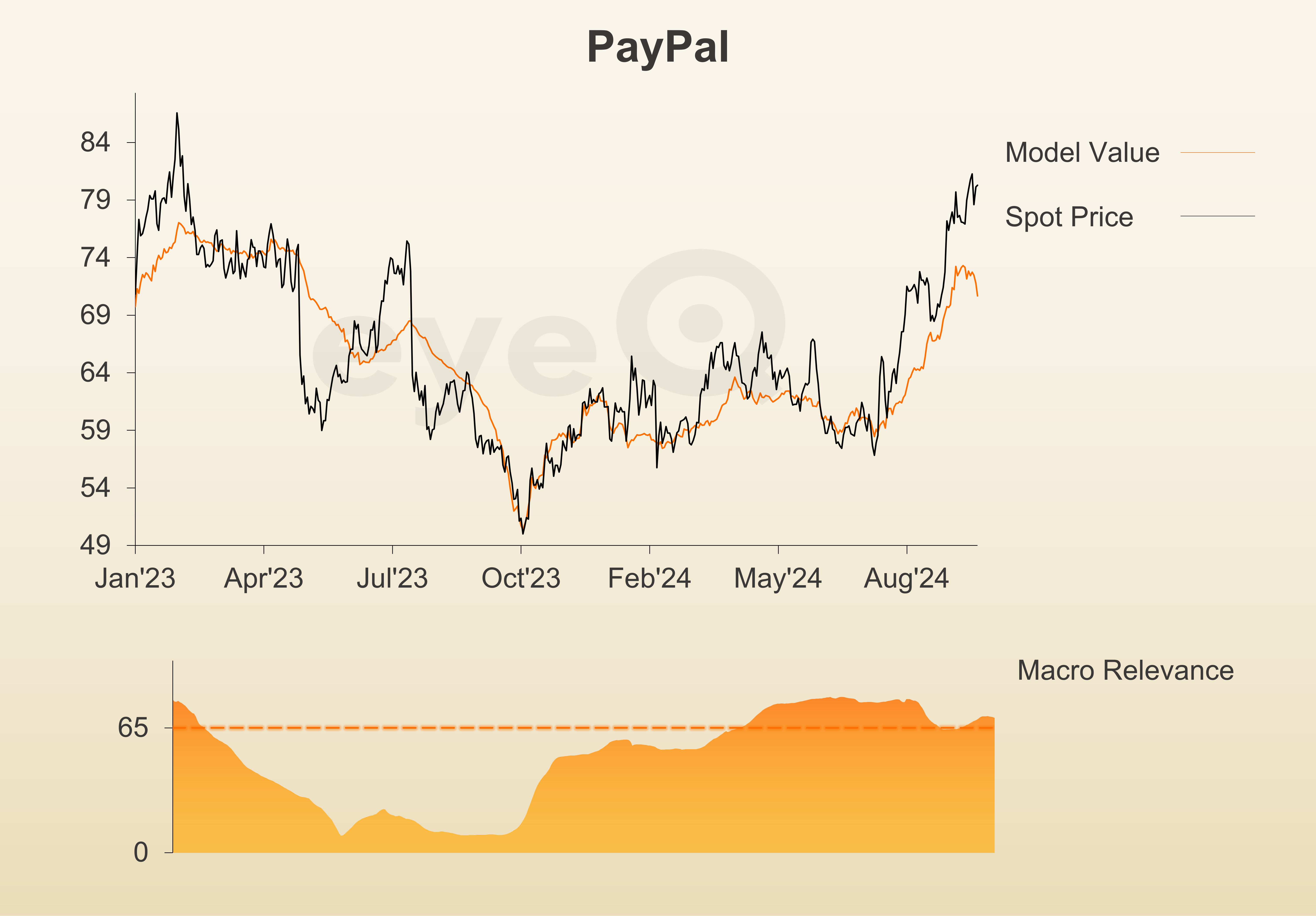eyeQ: this bearish signal is a tactical opportunity
Experts at eyeQ use AI and their own smart machine to analyse macro conditions and generate actionable trading signals. Now, there’s a chance to repeat a successful trade.
15th October 2024 10:19
by Huw Roberts from eyeQ

"Our signals are crafted through macro-valuation, trend analysis, and meticulous back-testing. This combination ensures a comprehensive evaluation of an asset's value, market conditions, and historical performance." eyeQ
- Discover: eyeQ analysis explained | eyeQ: our smart machine in action | Glossary
PayPal
Macro Relevance: 70%
Model Value: $71.06
Fair Value Gap: +11.91% premium to model value
Data correct as at 15 October 2024. Please click glossary for explanation of terms. Long-term strategic model.
The eyeQ smart machine has fired a bearish signal on PayPal Holdings Inc (NASDAQ:PYPL) which sits nearly 12% rich versus aggregate macro conditions on our model.
The stock has had a great run, rallying around 40% over the summer. Macro conditions had supported this move – model value was also rising between June and September. But, in October, macro momentum has shifted lower.
eyeQ model value has fallen 3.4% this month, mainly because PayPal wants a weak dollar and falling inflation. Both have risen of late. The result is a bearish divergence pattern with the last bit of this PYPL rally not backed up by macro fundamentals.
This is a tactical opportunity for the more active investor. It is not a long-term bear call on the company fundamentals; rather that the macro environment has shifted in a less friendly direction.
Remember, on 12 June the smart machine fired a bearish signal. That was a good tactical signal - the stock fell around 10% into month-end, spent a month languishing at the lows before the recent rally started.
It won’t suit everyone but, for the nimble, the macro picture suggests risk-reward is skewed to the downside from here.

These third-party research articles are provided by eyeQ (Quant Insight). interactive investor does not make any representation as to the completeness, accuracy or timeliness of the information provided, nor do we accept any liability for any losses, costs, liabilities or expenses that may arise directly or indirectly from your use of, or reliance on, the information (except where we have acted negligently, fraudulently or in wilful default in relation to the production or distribution of the information).
The value of your investments may go down as well as up. You may not get back all the money that you invest.
Equity research is provided for information purposes only. Neither eyeQ (Quant Insight) nor interactive investor have considered your personal circumstances, and the information provided should not be considered a personal recommendation. If you are in any doubt as to the action you should take, please consult an authorised financial adviser.
Disclosure
We use a combination of fundamental and technical analysis in forming our view as to the valuation and prospects of an investment. Where relevant we have set out those particular matters we think are important in the above article, but further detail can be found here.
Please note that our article on this investment should not be considered to be a regular publication.
Details of all recommendations issued by ii during the previous 12-month period can be found here.
ii adheres to a strict code of conduct. Contributors may hold shares or have other interests in companies included in these portfolios, which could create a conflict of interests. Contributors intending to write about any financial instruments in which they have an interest are required to disclose such interest to ii and in the article itself. ii will at all times consider whether such interest impairs the objectivity of the recommendation.
In addition, individuals involved in the production of investment articles are subject to a personal account dealing restriction, which prevents them from placing a transaction in the specified instrument(s) for a period before and for five working days after such publication. This is to avoid personal interests conflicting with the interests of the recipients of those investment articles.